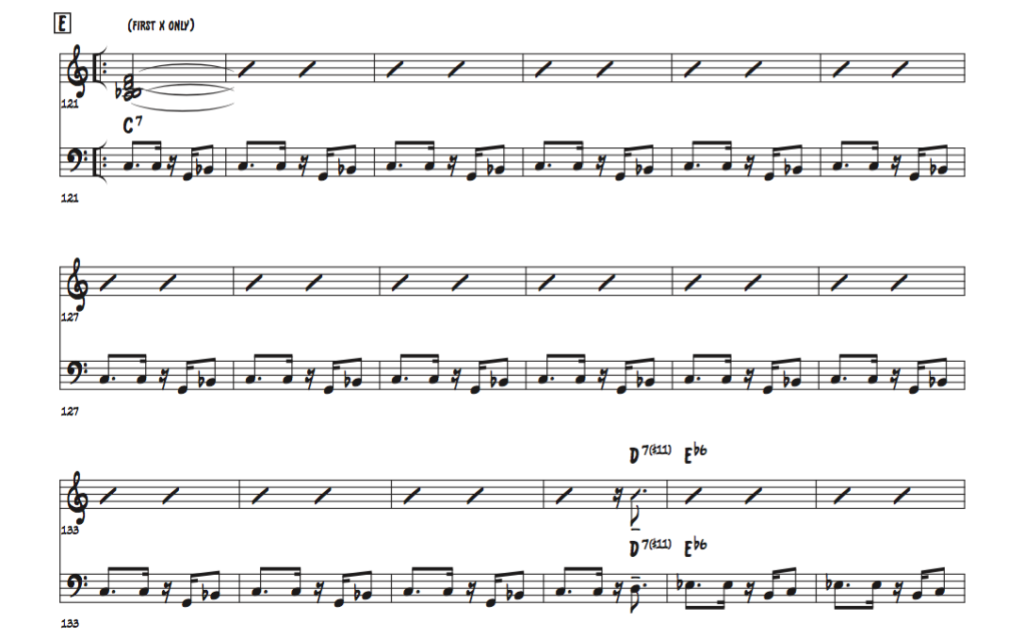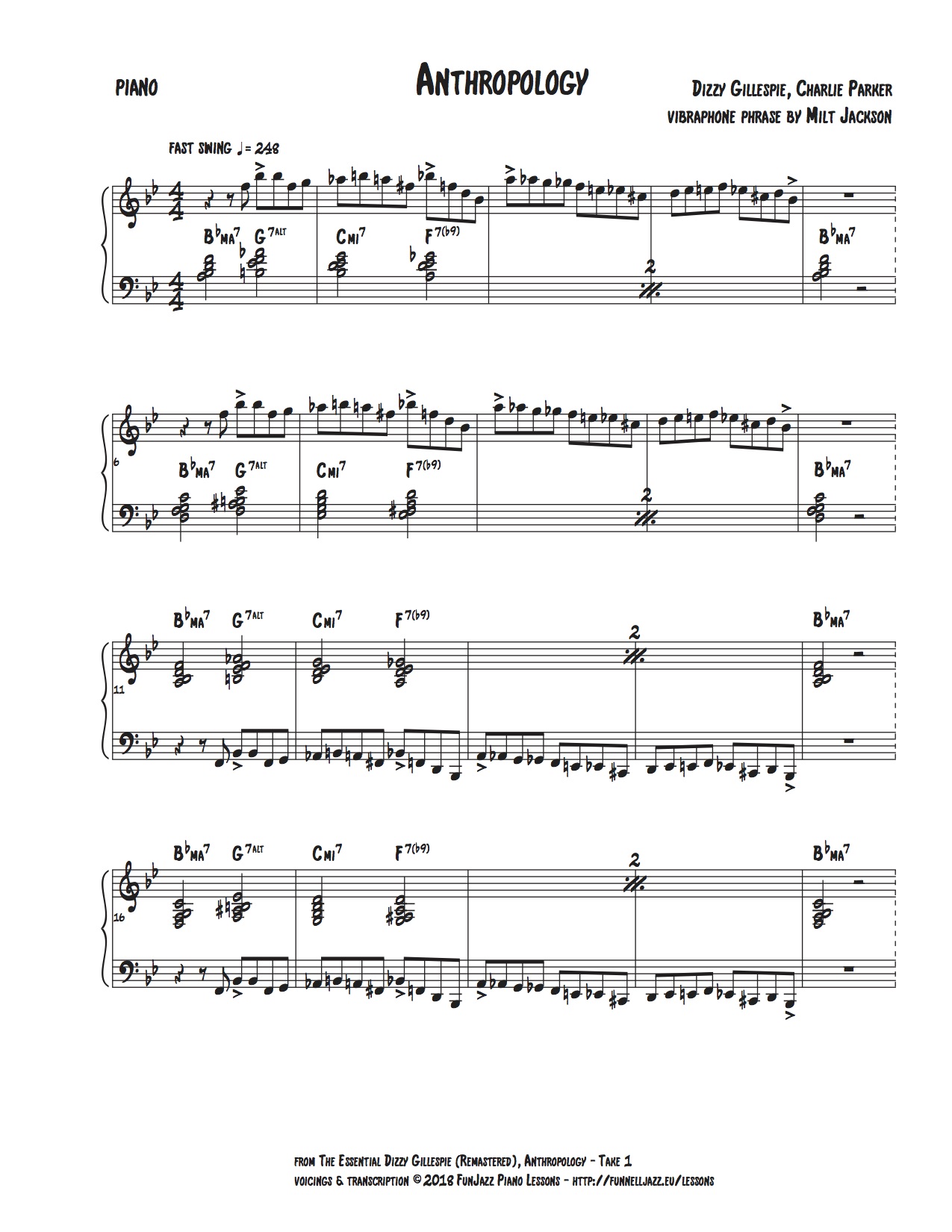Let’s have a look at the chord grid for the solo section on Oleleko (the electric piano improvisation happens from 2’02 to 3’35 on the recording):


The following table lists all chord symbols, the parent scales they derive from, and their “new notes,” which is a concept introduced by contemporary jazz pianist and composer Laszlo Gardony (for each chord, we list the notes in the parent scale that were not present in the scale corresponding to the previous chord – this helps to give a sense of forward motion to the music and emphasize the shifts in harmony as we go through the grid):
| Bar | Chord Symbol |
Mode (Parent Scale) |
New Note(s)? |
|---|---|---|---|
| 121 | C7 | C mixolydian (F major) |
C D E A |
| 136 | D7(#11) | D lydian dominant (A melodic minor) |
F# G# B |
| 137 | Eb6 | Eb ionian (Eb major) |
Eb F G Bb |
| 139 | Eb7sus | Eb mixolydian (Ab major) |
Db |
| 141 | Eb6 | Eb ionian (Eb major) |
D |
| 143 | Eb7sus | Eb mixolydian (Ab major) |
Db |
| 144 | E7(#11) | E lydian dominant (B melodic minor) |
E F# B D |
| 145 | F#6 | F# ionian (F# major) |
D# E# |
| 147 | F#7sus | F# mixolydian (B major) |
E |
| 149 | F#6 | F# ionian (F# major) |
E# |
| 150 | Db7(#11) | Db lydian dominant (Ab melodic minor) |
G |
Now let’s find possible tetratonic scales based on those “new notes” (using four-note scales will enable us to limit our melodic choices and create wider, more angular intervals, while including as many of the “new notes” as possible in order to retain the characteristic harmonic shifts in the music):
| Bar | Chord Symbol |
Tetratonic Scale(s) |
|---|---|---|
| 121 | C7 | A minor (= A C D E) |
| 136 | D7(#11) | E major (= E F# G# B) |
| 137 | Eb6 | Eb major |
| 139 | Eb7sus | Db major, Bb minor |
| 141 | Eb6 | Bb major, G minor |
| 143 | Eb7sus | Db major, Bb minor |
| 144 | E7(#11) | B minor |
| 145 | F#6 | C# major, A# minor |
| 147 | F#7sus | E major, C# minor |
| 149 | F#6 | C# major, A# minor |
| 150 | Db7(#11) | Eb major |
When there are two tetratonic choices, I simply go with the one I like best (in bold in the table above). By all means, feel free to experiment with both options and chose whichever sounds most satisfying to your ear!
Finally, and for the purpose of practicing, we can further break down these tetratonic sounds into triads: once you feel comfortable improvising using the triads exclusively, it’s easier to play the full tetratonic scales (adding a major second to major triads and a perfect fourth to minor triads to get the corresponding tetratonics).
| Bar | Chord Symbol |
Tetratonic Scale(s) |
Triads |
|---|---|---|---|
| 121 | C7 | A minor | A- |
| 136 | D7(#11) | E major | E |
| 137 | Eb6 | Eb major | Eb |
| 139 | Eb7sus | Bb minor | Bb- |
| 141 | Eb6 | G minor | G- |
| 143 | Eb7sus | Bb minor | Bb- |
| 144 | E7(#11) | B minor | B- |
| 145 | F#6 | C# major | C# |
| 147 | F#7sus | C# minor | C#- |
| 149 | F#6 | C# major | C# |
| 150 | Db7(#11) | Eb major | Eb |
Complete sheet music for “Oleleko” (from the album Tao, 2019) is available. Please visit the Funnelljazz catalogue for more information.
Visit http://funnelljazz.eu/lessons/ for detailed information about lessons or click on the image below to book your lesson today:















